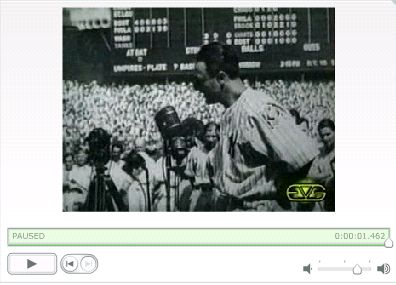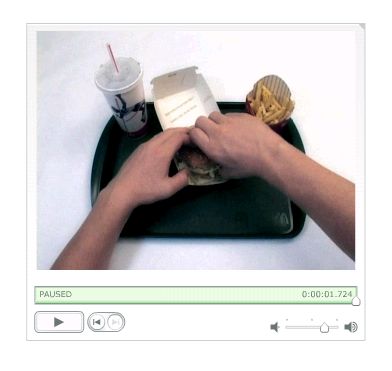A Review of i-cite and i-claim
James P. Purdy
Multimedia Affordances [1 2 3 4]
That these CDs offer new possibilities for engagement with texts in multiple media is the explicit selling point of each CD. On the opening screen of i-claim, Clauss explains, "We created this CD-ROM because arguments use more than words, and exist beyond the printed page." This rationale reinforces that discussions of argument are too limited when confined to print media and words. Arguments rely on multiple media and modes; therefore, instruction in argumentation must extend beyond print words. Other composition rhetorics (e.g., Lunsford & Ruszkiewicz, 2007; George & Trimbur, 2006) emphasize this same idea and a number of new composition textbooks have been created to specifically address images as texts-for instance, Getting the Picture (Muth & Kitalong, 2004) , Picturing Texts (Faigley, George, Palchik, & Selfe, 2004), Seeing and Writing 2 (McQuade & McQuade, 2003) , Beyond Words (Ruszkiewicz, Anderson, & Friend, 2006), and Writing in a Visual Age (Odell & Katz, 2006). i-claim , as a multimedia CD, however, is unique in offering examples of such multimedia arguments, including moving images and sound, together in one place. Students can literally see and hear how these arguments proceed. They can, for example, listen to and watch Lou Gehrig's 1939 farewell speech and read annotations that provide analysis of segments of this speech (tutorial #1: arguments make claims; see figure 1). They can watch and listen to a commercial from Adbusters about the fat content of fast food (tutorial #2: arguments have context; see figure 2). They can watch and listen to the 1947 instructional film Are You Popular? and read commentary about claims advanced by the film and the logic (or lack of logic) used to support them (tutorial #6: arguments have logic; see figure 3). So rather than just talk about multimedia arguments, in its six tutorials on the functions of argument i-claim provides access to and analyzes multimedia arguments.
*Videos are saved as .wmv files. When clicked, they will open in your computer's Windows Media Player.
Figure 1: Segment from Lou Gehrig Speech from Tutorial #1

Click on the image above to play the video.*
Figure 2: Adbusters Ad from Tutorial #2

Click on the image above to play the video.*
Figure 3: Segment from Are You Popular? from Tutorial #6

Click on the image above to play the video.*

